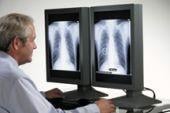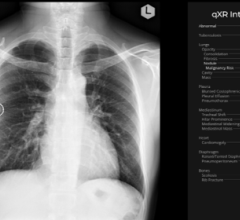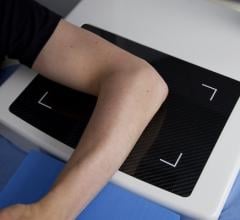
June 22, 2010 – Riverain Medical announced this week that the U.S. Food and Drug Administration (FDA) has granted approval for the newest version of the OnGuard Chest X-ray Computer-Aided Detection (CAD) technology. OnGuard identifies solitary pulmonary nodules that may represent early-stage lung cancer on an existing chest X-ray. This improved performance demonstrates a 73 percent reduction in false positive marks and 50 percent higher relative sensitivity compared to the original product. [1]
More than 200,000 Americans will be diagnosed with lung cancer this year. Only a small percentage of these patients will be diagnosed with lung cancer in the earliest stages when it is most treatable. When lung cancer is detected early, five-year survival rates triple. [2] Multiple studies demonstrate that OnGuard can detect 37 to 50 percent of lung cancers that were missed in the initial interpretation. [3, 4]
“Our published studies demonstrate that OnGuard can detect up to 50 percent of the lung cancers that were missed in the initial interpretation,” says Dr. Charles White, professor and vice chairman of radiology at the University of Maryland School of Medicine. “OnGuard provides physicians with a tool to help identify suspicious nodules in the lungs earlier.”
Also cleared by the FDA is SoftView, a new image enhancement technology that increases the clarity of chest X-rays by suppressing bone on the digital image. The software automatically provides a soft tissue image for every chest X-ray.
For more information: www.riverainmedical.com
References:
1. Riverain Medical Clinical Trial for U.S. FDA Submission
2. American Cancer Society Facts and Figures 2010
3. White, C.; Flukinger, T.; Jeudy, J. and Chen, J. (2009). “Use of a Computer-Aided Detection System to Detect Missed Lung Cancer at Chest Radiography.” Radiology. 252: 273-281.
4. Li, F.; Englemann, R.; Metz, C.; Doi, K. and MacMahon, H. (2008). “Lung Cancers Missed on Chest Radiographs: Results Obtained with a Commercial Computer-aided Detection Program.” Radiology. 246: 273-280.


 December 03, 2025
December 03, 2025 









